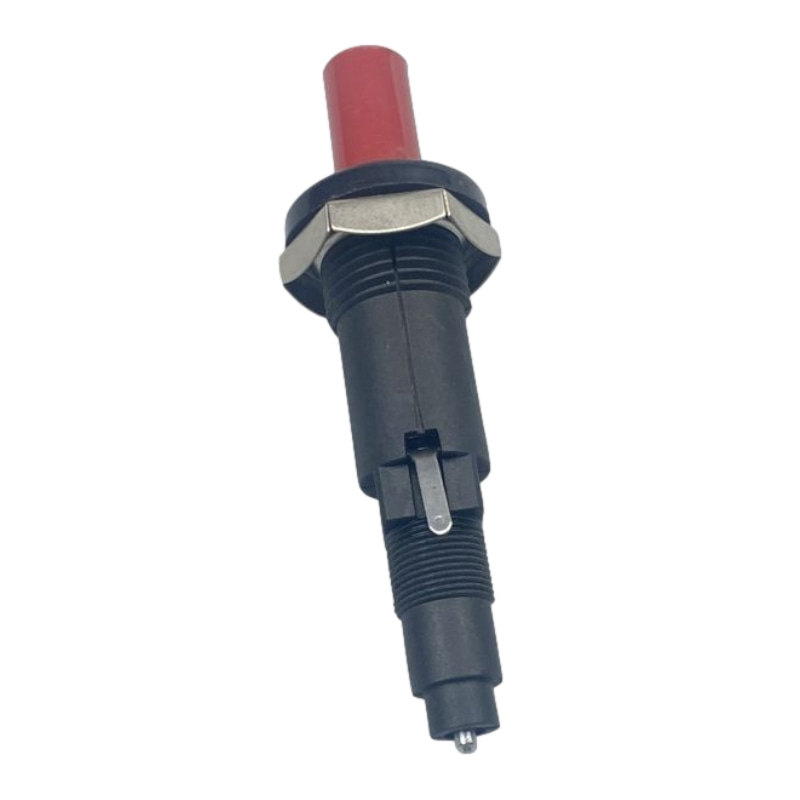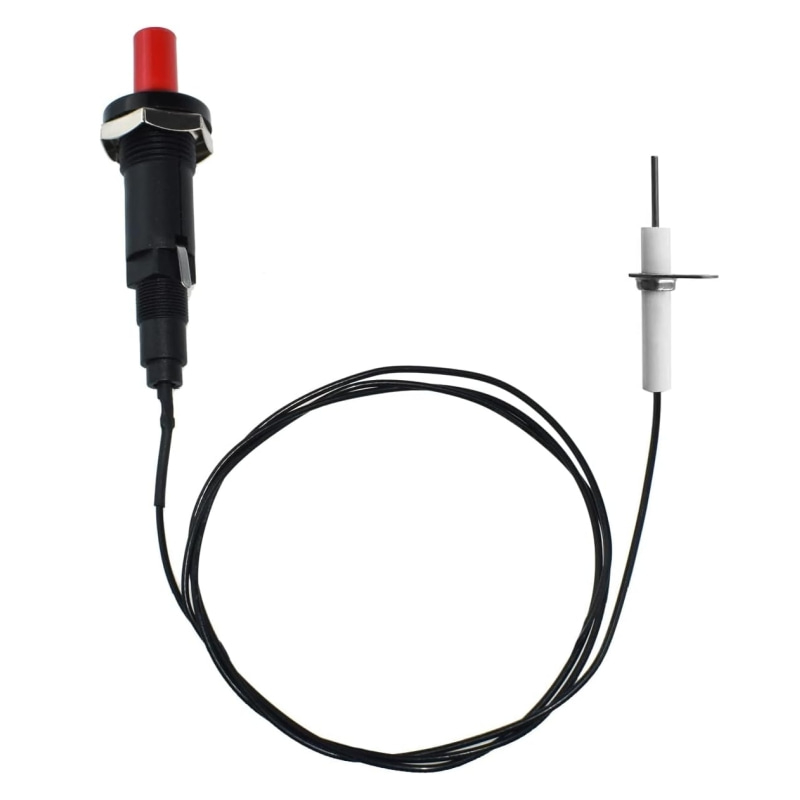Views: 0 Author: Site Editor Publish Time: 2025-09-22 Origin: Site








Have you ever wondered how a simple click can ignite a flame? The piezo igniter is a remarkable device that plays a crucial role in many applications, from camping stoves to gas ovens. Understanding how piezo igniters work is essential for anyone who uses these tools regularly.
In this post, we’ll explore the mechanics behind piezo igniters, their importance, and the piezoelectric effect that makes them function.
A piezo igniter is a small device used to create a spark for ignition. It typically consists of a piezoelectric crystal, which generates an electrical charge when compressed. This charge creates a high-voltage spark, igniting gas or other flammable materials.
The basic function of a piezo igniter is simple but effective. When you press the button or lever, mechanical stress is applied to the piezoelectric crystal. This stress causes the crystal to produce a high-voltage discharge. The resulting spark is what ignites the gas.
Piezo igniters are essential in many everyday devices. Here are a few common applications:
● Outdoor Equipment: Used in camping stoves and grills for quick ignition.
● Household Appliances: Found in gas ovens, water heaters, and fireplaces.
● Industrial Tools: Utilized in pilot lights for boilers and heating systems.
Their reliability and ease of use make them a popular choice.
Understanding how piezo igniters work is important for several reasons. First, it helps users troubleshoot problems. If your stove won’t ignite, knowing how the igniter functions can guide you in fixing it.
Second, piezo igniters are found in many devices we use daily. Recognizing their role can enhance safety and efficiency in using these tools.
In outdoor settings, piezo igniters provide a convenient way to start a fire, even in windy conditions. For household appliances, they ensure reliable ignition without the need for batteries or external power sources. In industrial tools, they play a crucial role in maintaining consistent operation.
The piezoelectric effect is the key principle behind these igniters. When certain materials, like quartz or ceramics, are mechanically stressed, they generate an electrical charge. This property is what makes piezo igniters so effective.
In summary, the piezoelectric effect allows devices to create sparks without needing a power supply. This efficiency is what makes piezo igniters valuable in various applications.

So, how does a piezo igniter generate sparks? The answer lies in the concept of mechanical stress. When you apply pressure to the piezoelectric crystal, it undergoes a transformation that produces an electrical charge. This is where the magic happens!
Mechanical stress is the force applied to a material. In the case of piezo igniters, this stress compresses the crystal, causing it to produce a voltage. The crystals used in these igniters, such as PZT (lead zirconate titanate) and quartz, are excellent at converting mechanical energy into electrical energy.
Let’s break down the spark generation process step by step:
1. Mechanical Stress Applied to the Crystal: When you press the igniter button, it compresses the piezoelectric crystal.
2. Release of High-Voltage Charge: This compression generates a high-voltage charge, typically exceeding 16,000 volts (16kV+).
3. Spark Formation Across the Gap: The electrical charge travels across a small gap, usually about 3.5 to 4 mm, creating a spark.
This sequence is quick and efficient, allowing for immediate ignition.
One of the standout features of piezo igniters is their self-contained nature. Unlike other ignition systems, such as pulse igniters, they don’t require batteries or external power sources.
Feature | Piezo Igniter | Pulse Igniter |
Power Source | None | Requires battery |
Reliability | High | Variable |
Maintenance | Low | Moderate |
Being self-contained offers several benefits:
● Convenience: You don’t have to worry about replacing batteries.
● Lightweight Design: Ideal for portable applications like camping gear.
● Durability: Piezo igniters are built to withstand outdoor conditions better than battery-powered alternatives.
This competitive edge makes piezo igniters a favorite among outdoor enthusiasts and homeowners alike. They provide reliable ignition without the hassle of external power sources.
To understand how a piezo igniter works, let’s explore its key components.
A piezo crystal is the heart of the igniter. It converts mechanical stress into electrical energy, generating the spark needed for ignition.
Types of Crystals Used:
● PZT (Lead Zirconate Titanate): Known for its high efficiency and sensitivity.
● Quartz: A natural crystal that also performs well but may not be as powerful as PZT.
Properties:
● Heat Resistance: Both types can withstand high temperatures, ensuring reliable performance in various conditions.
The mechanical trigger is crucial for activating the igniter.
Types of Triggers:
● Spring-Loaded Hammer: This design uses a spring mechanism to compress the crystal quickly.
● Integrated Knob: A simpler twist or push mechanism that directly applies pressure.
Usability and Convenience:
● Spring-loaded triggers often provide a quicker response, while integrated knobs can be easier to operate in tight spaces.
The spark electrode is where the magic happens.
Material and Design:
● Typically ceramic-tipped, these electrodes are designed to withstand high temperatures and repeated use.
Importance of Positioning:
● Electrode placement is critical. It needs to be close to gas outlets to ensure efficient ignition.
Competitive Insight:
● Premium aftermarket kits frequently include ceramic-coated electrodes. This coating enhances durability and extends the lifespan of the igniter.
Insulated wiring connects all components and plays a vital role in functionality.
● Function: It carries the electrical charge from the piezo crystal to the spark electrode.
● Importance: Proper insulation prevents short circuits and ensures safety, allowing the igniter to be used across different applications, from camping stoves to industrial tools.
By understanding these components, we can appreciate how piezo igniters deliver reliable ignition in a variety of settings.
Piezo igniters are versatile devices found in various applications. Let’s explore some common uses.
One of the most popular applications for piezo igniters is in outdoor gear.
Examples:
● Camping Stoves: Lightweight and easy to use, they ignite fuel quickly.
● Portable Grills: Perfect for tailgating or picnics, ensuring a reliable flame.
Advantages in Outdoor Settings:
● Wind Resistance: These igniters work well even in breezy conditions, making them ideal for outdoor cooking.
● Reliability: Users can count on them to ignite quickly every time.
Specific Features:
● Push-Button Canister Stoves: Many have recessed electrodes designed to minimize wind interference, enhancing performance outdoors.
Piezo igniters are also commonly used in household appliances.
● Gas Ovens: They provide a quick and efficient way to ignite the burner.
● Water Heaters: Ensures instant heating without the need for matches.
● Fireplaces: Offers a safe and reliable ignition source for gas logs.
In industrial settings, piezo igniters play a crucial role.
● Pilot Lights for Boilers: They maintain a small flame that ignites the main burner.
● Pellet Stoves: These igniters help in starting the combustion process efficiently.
Comparison with Hot-Surface Igniters:
Feature | Piezo Igniter | Hot-Surface Igniter |
Ignition Type | Instant sparks | Warm-up time required |
Response Time | Immediate | Delayed |
Reliability in Outdoor Use | High | Variable |
Competitive Differentiation:
● Piezo igniters provide instant sparks, whereas hot-surface igniters require a warm-up time. This makes piezo igniters more efficient for high-end stoves and other applications.
With their diverse applications, piezo igniters continue to be a preferred choice for many users, from outdoor enthusiasts to homeowners and industrial operators.

Understanding the durability and maintenance of piezo igniters is essential for users.
Typically, piezo igniters can last between 50,000 to 100,000 strikes. This impressive lifespan makes them a reliable choice for many applications.
Factors Affecting Durability:
● Crystal Quality: Higher quality crystals tend to perform better over time.
● Mechanical Stress: Excessive force during activation can weaken the igniter.
Even the best igniters can encounter issues.
Common Problems:
● Clogged Electrodes: Dirt and debris can block the spark.
● Weakened Springs: Over time, springs may lose tension, affecting performance.
DIY Maintenance Tips:
● Cleaning: Regularly inspect and clean the electrodes with a soft brush.
● Replacing Parts: If springs or electrodes are damaged, consider replacing them. Many parts are available online or at hardware stores.
For those who enjoy hands-on projects, replacing a piezo igniter can be straightforward.
Here’s a simple step-by-step guide for DIY enthusiasts:
1. Gather Your Tools: You’ll need a screwdriver, replacement igniter, and possibly pliers.
2. Disconnect Power: Always ensure the appliance is turned off and unplugged.
3. Remove the Old Igniter: Unscrew and carefully detach it from the appliance.
4. Install the New Igniter: Position it correctly and secure it with screws.
5. Test the Igniter: Reconnect power and test to ensure it works.
Recommended Kits and Tools:
● Look for all-in-one repair kits that include igniters, screws, and cleaning tools.
When considering replacement options, it’s important to analyze costs.
Type | Price Range | Features |
Budget Igniters | $10 - $20 | Basic functionality |
Premium Models | $25 - $50 | Enhanced durability, better materials |
Cost Benefits of DIY Repairs:
● DIY vs. Professional Repairs: Doing it yourself can save significant money. Professional repairs may cost upwards of $100.
Examples of Budget and Premium Igniters:
● Budget: Basic piezo igniters suitable for simple applications.
● Premium: High-quality igniters designed for heavy-duty use, often featuring ceramic tips and better spark generation.
By keeping these tips in mind, you can extend the life of your piezo igniter and save money on repairs.
Piezo igniters are essential devices that create sparks for ignition. They work by utilizing mechanical pressure on crystals.
Understanding their operation helps highlight their importance in various applications, from outdoor gear to household appliances.
We encourage readers to explore DIY maintenance and repairs for these devices.
Feel free to share your experiences or ask questions about piezo igniters!